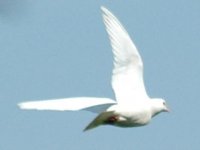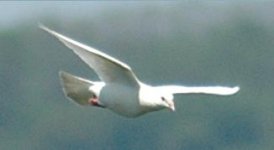AmpelisChinito
Cedar Waxwing Chairman
I saw this today in Greater Boston, MA at 2:30. There were two and they were huge. They both had the same markings on the tail. At first glance, they appear to be Snowy Owls, because of their size. I'd say their wingspan was about 45". They would fly around, as if in some mating display. I've never heard of this bird, or anything like it.
Ampelis
Ampelis





